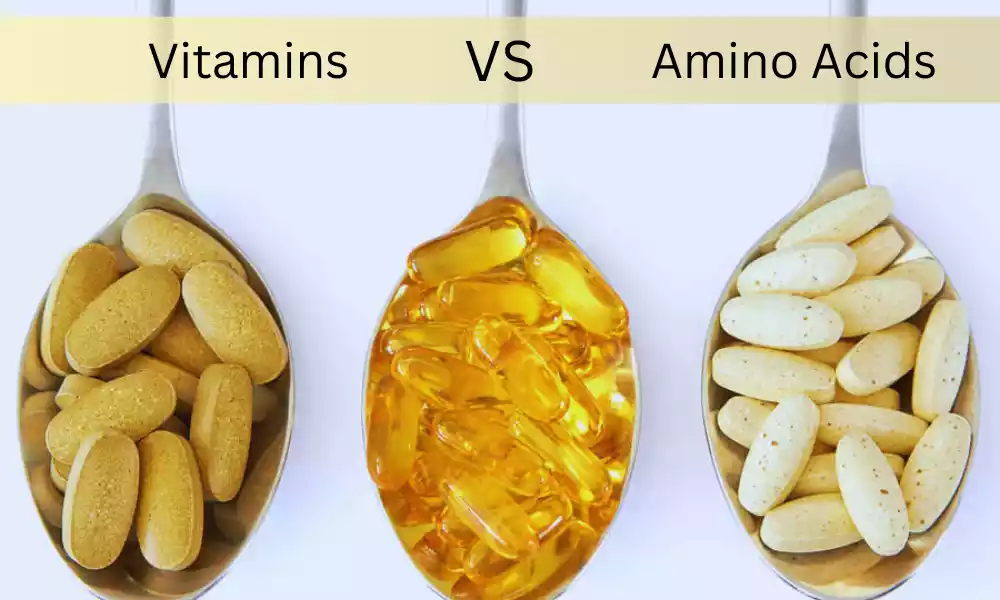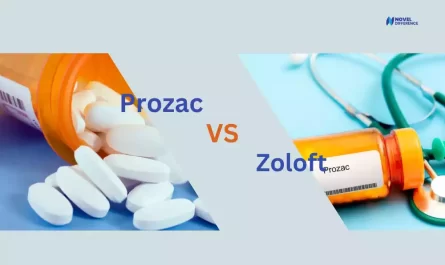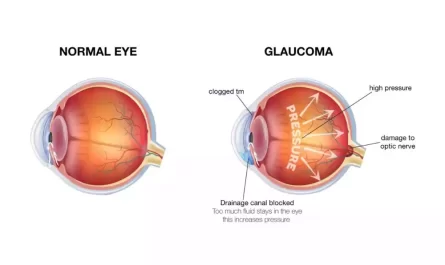Explanation of the importance of vitamins and amino acids in the body
Amino acids and vitamins are important nutrients that play a vital role in maintaining the well-being and functioning of the human body.
Each one of these groups of nutrients performs distinct roles and is a contributor to different aspects of well-being in general:
Importance of Vitamins:
- Cofactors and Coenzymes: Many vitamins act as coenzymes or cofactors during enzyme reactions. They aid in these reactions, which allow various metabolic processes to take place. For instance, vitamin B-complex vitamins play a crucial role in the metabolism of energy, and vitamin K is crucial to clotting blood.
- Antioxidant Defense: Certain vitamins, like Vitamin C as well as vitamin E function as antioxidants. They aid in neutralizing harmful free radicals as well as reduce oxidative stress. These can harm cells and lead to chronic illness.
- Immune Support: Some vitamins, such as vitamin D are thought to play a crucial role in the function of the immune system. A healthy level of vitamin D is vital to protect the body against infection and for maintaining a healthy immune system.
- Bone Health: Vitamins such as Vitamin D as well as vitamin K are essential to bone health. They aid in calcium absorption and bone mineralization, which helps avoid conditions such as osteoporosis.
- Hair, Skin as well and Vision: Vitamins like vitamin A are vital to maintain good skin and vision. Vitamin A is essential to the proper functioning of the eyes as well as the development and regeneration of cells in the skin.
- Function of the Nervous System: Vitamin B, including B1 (thiamine) B6 (pyridoxine), and B12 (cobalamin) are vital to the functioning of the nervous system. They play a role in the synthesis of neurotransmitters and neurotransmitter transmission.
- Regeneration and Cell Growth: Vitamins are vital for the growth of cells, their development, and repair. They are essential for the creation of organs, and tissues as well as DNA replication.
Importance of Amino Acids:
- Protein Synthesis: Proteins are made up of amino acids, which form the protein’s building blocks. They are essential for the synthesis of enzymes and antibodies, hormones along structural proteins, which make up organs and tissues.
- Muscle Maintenance: Amino acids, specifically the amino acids branched chain (BCAAs) are involved in crucial roles in muscle protein production and maintenance. They are crucial to the repair and growth of muscles.
- Metabolic Functions: The amino acids play a role in a variety of metabolic pathways. For instance, they are involved in energy production, the creation of neurotransmitters (e.g. serotonin, serotonin, and dopamine), and the detoxification of harmful chemicals.
- Immune function: Vitamins and amino acids aid in the production of antibodies as well as immune cells, which enhance the immune system’s ability to fight off diseases and infections.
- Neurotransmitter Production: Tryptophan and amino acids are precursors to neurotransmitters, such as serotonin that help regulate behavior and mood.
- Enzyme Activity: Certain amino acids function as cofactors for enzymes improving their catalytic activities and aiding various biochemical reactions.
The amino acids and vitamins are vital to a variety of biological processes in the body. They are vital to energy production as well as repair, growth, and maintenance of overall health. A balanced diet that supplies the proper amount of amino acids and vitamins is vital to ensure these functions and to prevent nutrition-related deficiencies and related health problems.
Brief overview of the key differences between vitamins and amino acids
Here’s a quick review of the major differences between amino acids:
Vitamins:
- Chemical Composition: Vitamins can be described as organic molecules, usually small molecules. They are not a part of the structural structure of proteins.
- function: Vitamins primarily act as coenzymes or cofactors helping in enzymatic reactions as well as different metabolic processes.
- The Sources: Vitamins come from a variety of food items, such as grains, fruits, vegetables, and animal products.
- Definition: Vitamins are classified into two major categories which are water-soluble (e.g. Vitamin C B-complex vitamins) as well as fat-soluble (e.g. vitamins A, D, E, K).
- Vitality: A few vitamins are vital and require to be sourced through diet since the body can’t make them in sufficient quantities (e.g. vitamin C) While others may get synthesized within the body.
- Storage: Vitamins remain in various organs and tissues within the body. excess amounts are stored for later use.
- Toxicity and Deficiency: Vitamin deficiency and toxicities can cause many health consequences, based on the particular vitamin that is involved.
Amino Acids:
- Chemical Composition: The amino acids can be described as organic compounds that are the basic protein building blocks, which are the essential functional and structural components of the human body.
- function: Amino acids primarily serve as proteins’ building blocks but they also play diverse metabolic functions.
- sources: Amino acids are made from protein-rich foods like fish, meat dairy products, eggs, and plant-based sources such as legumes.
- Definition: Amino acids are classified into two major categories that are important amino acids (must be obtained from the intake of food) as well as non-essential amino acids (can be produced through the organism).
- The essentiality of HTML0: The essential amino acids are not able to be produced within the human body, in adequate amounts and therefore have to be obtained from diet sources.
- Storage: The amino acid is not stored by the body to the same degree as vitamins. In excess, amino acids are transformed into other substances.
- Insufficiency: The deficiency of amino acid is typically associated with insufficient protein intake, and may cause muscle weakness and health problems.
The amino acids and vitamins are different with respect to their chemical makeup, roles in dietary sources, as well as importance. Although vitamins are principally used in the enzymatic reaction as well as metabolic processes amino acids are vital in the synthesis of proteins and play diverse metabolic functions including keeping the structure and functioning of organs and tissues.
What Are Vitamins?
Vitamins are organic molecules that the human body needs in small amounts to ensure proper physiological functions and general well-being. Micronutrients play a vital function in a myriad of biochemical processes that help to regulate a variety of bodily functions.
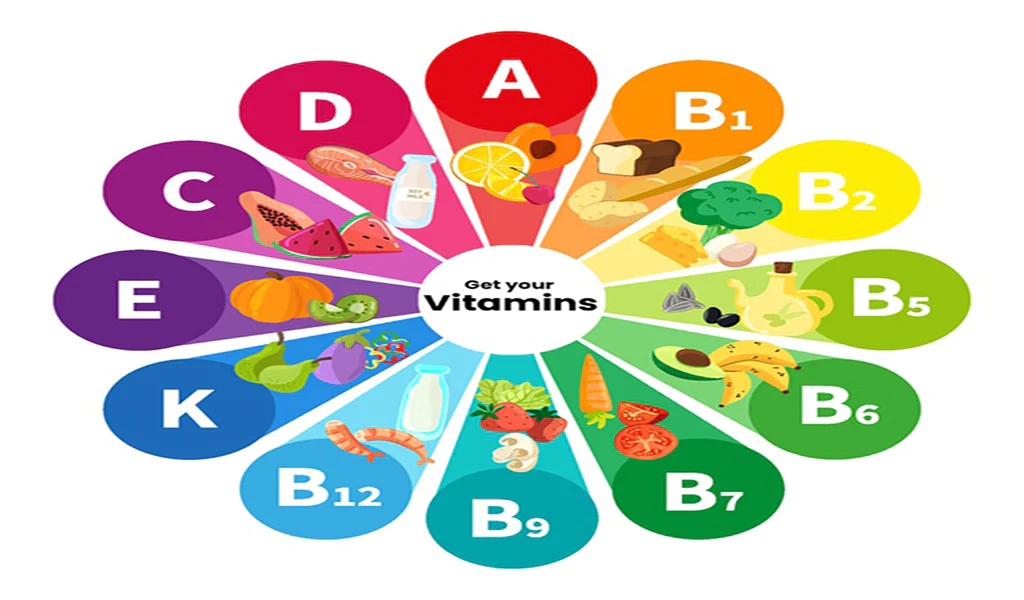
The most important characteristics of vitamins are:
- essentiality: Vitamins are deemed vital because the body is unable to produce enough of them or, in some instances even or even at all. Thus, they have to be obtained through diets or through supplements.
- Small Dosage: Vitamins are needed in small amounts when relative to macronutrients such as proteins, carbohydrates, and fats. Although they are required in small amounts their absence or insufficient intake could cause serious health issues.
- Cofactors and Coenzymes: Numerous vitamins are cofactors or coenzymes which means that they function in conjunction with enzymes to aid in and regulate biochemical reactions within the body. Enzymes are proteins that accelerate chemical reactions. Vitamins frequently assist them in their functions.
- Classification: Vitamins are divided into two major groups based on the degree of their solubility:
- Water-soluble Vitamins: They dissolve in water, and comprise vitamin C as well as the B-complex vitamin (such as B1 and B2, B3, B5, B7,, as well as B12). The water-soluble vitamins are not stored inside the body a large amounts and must be replenished regularly through diet.
- Fat-Soluble Vitamins: They are soluble in fats and contain Vitamins A, D, E, and K. Vitamins that are fat-soluble can be stored in your body’s liver and fat tissues, and excessive amounts may build up over time.
- Roles and Functions: Each vitamin plays a specific role and role in the body. Examples include:
- Vitamin C is vital in collagen production wound healing and immunity.
- Vitamin D is vital to calcium absorption and bone health.
- Vitamin A is essential to maintain skin health, vision, and the immune system.
- Vitamin K is essential to prevent blood clotting.
- B-complex vitamins play a role in the metabolism of energy nervous system function and much more.
- sources of nutrition: Vitamins are found in a myriad of food items, such as fruits and vegetables grains, meats, dairy products, and legumes. A balanced diet containing diverse food items is vital for ensuring a healthy amount of nutrients.
It is essential to keep a healthy amount of vitamins in your diet to prevent deficiency or excessive amounts since both could lead to health issues. While vitamins are crucial to good health, they’re just one aspect of the total nutritional picture. A balanced diet that contains all the essential nutrients is vital to maintaining good health.
What Are Amino Acids?
Amino acids are organic molecules that act as protein building blocks in living organisms like humans. They are vital for a variety of biological processes and are essential to the growth of repair and the proper function of the human body.
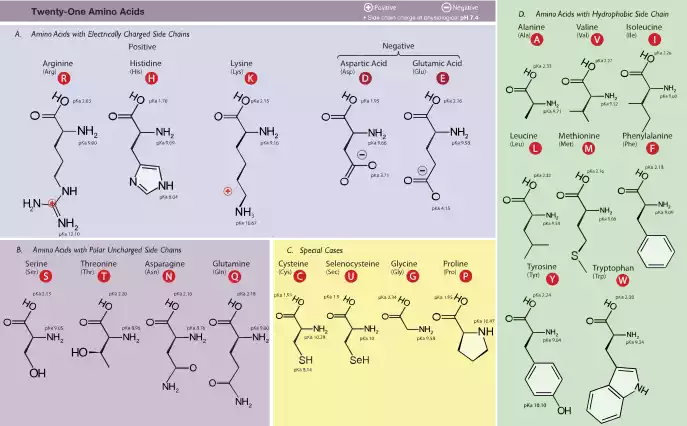
Amino acids are distinguished by a variety of key characteristics:
- Composition: Amino acids comprise an atom of carbon central (C) which is attached to four chemical groups:
- An amino group (NH2)
- Carboxyl groups (COOH)
- A hydrogen atom (H)
- A distinctive side chain often referred to in the group R has a different structure from other amino acids.
- Protein Amino Acid Variety: The amino acids are made up of 20 distinct amino acids present in protein, all of which have an individual side chain. The 20 amino acids could be further divided into two groups, based on whether or not they’re essential or not.
- Essential and Non-Essential Amino Acids:
- Essential Amino Acids: The amino acids are ones that your body is not able to produce on its own in sufficient quantities, which is why they need to be sourced from the diet. There are nine amino acids: histidine isoleucine (also known as leucine), lysine methionine, phenylalanine tryptophan, threonine, and valine.
- Non-essential Amino Acids: The body is able to make non-essential amino acids from other compounds, which means they do not have to be sourced directly from food sources. There are 11 amino acids that aren’t essential such as alanine, arginine aspartic acid, asparagine, glutamine, cysteine, glutamine acid, glycine serine, tyrosine, and.
- Protein Structure: The amino acids join via peptide bonds to form long chains known as polypeptides or proteins. A sequence of amino acids within the protein determines its specific design and functions.
- Functions:
- Protein Synthesis: The amino acids play a vital for the creation of proteins. These have a multitude of roles in the body, such as structural components, enzymes, antibodies, hormones, and transport molecules.
- Metabolism: Amino acids are involved in a variety of metabolic pathways, including energy production and the production of neurotransmitters as well as the detoxification of harmful chemicals.
- Muscle Maintenance: Branch-chain amino acids (BCAAs) which include leucine, Isoleucine, as well as valine, are crucial for the growth of muscles repair, maintenance, and growth.
- Dietary Sources: Amino acids are derived through dietary sources that are high in protein, such as:
- Animal sources include: Meat, poultry eggs, fish, and dairy products
- Plant sources: Legumes seeds, nuts, as well as grains
A balanced intake of the essential amino acids with diverse and well-rounded food choices is essential to ensure overall health and the proper function of your body. Inadequate or deficient amino acids could lead to a variety of health issues, including a slowing of growth, muscle weakness, and metabolic issues.
Vitamins and Amino Acids in the comparison chart
Here’s a comparison chart highlighting the key differences between vitamins and amino acids:
| Characteristic | Vitamins | Amino Acids |
|---|---|---|
| Chemical Composition | Organic compounds, not part of the protein structure | Organic compounds, building blocks of proteins |
| Essentiality | Can be essential or non-essential | Essential (nine amino acids) and non-essential (11 amino acids) |
| Dietary Sources | Obtained from a variety of foods, including fruits, vegetables, animal products, etc. | Obtained from protein-containing foods such as meat, fish, dairy, legumes, etc. |
| Classification | Water-soluble (e.g., vitamin C, B-complex vitamins) and fat-soluble (e.g., vitamins A, D, E, K) | Categorized based on essentiality (essential vs. non-essential) |
| Storage in the Body | Can be stored in various tissues and organs to some extent | Not stored in the body to the same extent as vitamins |
| Excretion | Excess vitamins can be excreted through urine or feces | Excess amino acids are usually metabolized for energy or converted into other compounds |
| Coenzymes/Cofactors | Act as coenzymes or cofactors in enzymatic reactions | Serve as building blocks for protein synthesis |
| Functions | Regulate various biochemical processes, support immune function, contribute to bone health, and more | Mainly involved in protein synthesis, metabolism, and various physiological functions |
| Key Examples | Vitamin C, vitamin D, vitamin B12, vitamin K | Essential amino acids (e.g., lysine, leucine), non-essential amino acids (e.g., glutamine, proline) |
| Role in Protein Synthesis | Not directly involved in protein synthesis | Essential components in protein synthesis, determine protein structure |
| Dietary Recommendations | Obtain a variety of vitamins from a balanced diet | Consume a balanced diet with adequate protein sources to ensure amino acid intake |
| Deficiency and Toxicity | Deficiencies or excesses can have various health effects, depending on the specific vitamin | Amino acid deficiencies are typically associated with protein malnutrition; imbalances can impact muscle growth and overall health |
This chart summarizes the key distinctions between vitamins and amino acids, including their chemical composition, essentiality, dietary sources, storage, functions, and role in the body. Both vitamins and amino acids are essential for maintaining good health, but they serve different roles and have distinct characteristics within the body.
What are the similarities between Vitamins and Amino Acids?
While amino acids are distinct forms of nutrients, each with its own function within your body, they share certain similarities:
- essentiality: Vitamins and amino acids in particular are thought to be vital to our bodies. The essential nutrients include those that can’t be synthesized in sufficient amounts by the body and need to be obtained through diet. For amino acids, There are nine important amino acids that have to be absorbed through food sources. Vitamins, are essential, meaning that they must be obtained through supplements or food sources.
- Biomolecules: Both amino acids can be described as organic compounds. Vitamins can be described as organic molecules containing carbon-hydrogen, oxygen, and carbon and amino acids are organic substances made up of hydrogen, carbon-oxygen, and nitrogen.
- Nutritional Importance: Vitamins and amino acids play an important role in overall health and nutrition. They are vital for a variety of bodily processes, like growth, metabolism repair, as well as the maintenance of general well-being.
- Cofactor or Coenzyme Effects: Certain vitamins like B-complex vitamins (e.g. B1, B2, and B3) are cofactors or coenzymes in enzyme reactions. In the same way, certain amino acids, such as cysteine, also function as coenzymes or take part in enzymatic reactions. This is particularly the case in detoxification reactions and redox processes.
- Multiple Functions: Vitamins and amino acids perform a variety of functions in the body. While amino acids serve as the building blocks for protein, amino acids also take part in a variety of metabolic processes. Vitamins perform a range of roles, which include helping to boost the immune system, metabolism, and antioxidant defense.
- Dietary Sources: Vitamins and amino acids are derived from food sources. Vitamins can be found in a variety of food items, such as vegetables, fruits animals, animal products, and grains. Amino acids are found in protein-containing products like fish, meat dairy, legumes, and grains.
- Consequences of Deficiency: Deficiencies in vitamins or amino acids could cause health issues. For instance, a deficiency of vitamin C may cause scurvy. An insufficient intake of essential amino acids could cause diminished protein synthesis and other ailments, including loss of muscle mass and impaired immunity.
Although there are some similarities however, it is important to understand that amino acids and vitamins are different in their chemical structure as well as their functions and roles in the body.
Vitamins are organic substances that function as cofactors, or coenzymes, in biochemical reactions. On the other hand, amino acids act as basic components of proteins and play a role in the synthesis of proteins and other metabolic processes. A balanced diet that contains amino acids, as well as vitamins, is vital to maintain good health.
Interactions Between Vitamins and Amino Acids
Interactions between amino acids and vitamins are essential for a variety of bodily functions. These interactions are often found within biochemical reactions and metabolic pathways that depend on both amino acids and vitamins for their effectiveness.
Here are a few examples of how amino acids work together:
- Vitamin B6 (Pyridoxine) and Amino Acid Metabolism:
- Vitamin B6 is a key function in the metabolism of amino acids. It plays a role in the transformation from one amino acid to another and assists in the production of essential amino acids that are not required.
- Pyridoxal phosphate, an active vitamin B6 form, functions as a coenzyme within a variety of reactions that transform amino acids.
- For instance, vitamin B6 is vital to convert tryptophan (an amino acid) into the vitamin niacin (a B vitamin).
- Folate (Vitamin B9) and Methionine Synthesis:
- Folate is essential in the production of methionine which is an amino acid.
- Folate is a coenzyme for the transformation of homocysteine (an amino acid) into methionine. This, in turn, is involved in a variety of biochemical processes, such as protein production.
- Vitamin C (Ascorbic Acid) and Collagen Formation:
- Vitamin C is crucial in the hydroxylation process of amino acids lysine and proline in the process of collagen creation.
- The process of hydroxylation strengthens the collagen structure which is an essential component of connective tissue and skin as well as blood vessels.
- Vitamin D and Calcium Absorption:
- Vitamin D is essential to the absorption of calcium in the intestinal tract.
- Calcium isn’t an amino acid but it is crucial for the proper functioning of many proteins. function in the body. Calcium levels that are adequate are essential for a variety of processes such as muscle contraction and nerve signaling.
- Vitamin K and Blood Clotting Proteins:
- Vitamin K helps in the production of clotting agents in the blood, like prothrombin.
- Although they are not directly connected to the amino acid, these clotting agents are proteins that contain amino acids, which are vital to clotting blood.
- Vitamin B12 (Cobalamin) and Amino Acid Metabolism:
- Vitamin B12 is vital to the metabolism of specific amino acids. It helps convert homocysteine into methionine.
- Methionine is an amino acid that is required to make protein and for a variety of metabolic processes.
- Vitamin E and Protection of Amino Acids:
- Vitamin E is an antioxidant that protects protein and amino acids from damage caused by oxidation.
- This helps to maintain the function and integrity of a variety of proteins within the body.
These examples demonstrate the importance of vitamins in playing a part in the metabolism of amino acids as well as protein synthesis and the general function that the body. The amino acids and vitamins often collaborate to aid in various physiological processes.
deficiency in one can affect the interactions of these two and result in health problems. A balanced diet that is rich in amino acids and vitamins is vital for health overall and overall well-being.
Benefits of Vitamins and Amino Acids
Amino acids and vitamins offer numerous benefits to your body, supporting a variety of bodily functions and enhancing overall well-being.
These are some of the main advantages of amino acids and vitamins:
Benefits of Vitamins:
- Supporting Metabolism: Numerous vitamins, like B-complex vitamins, function as coenzymes or cofactors during metabolic reactions. They assist in converting food into energy and aid with the decomposition of macronutrients such as carbohydrates and fats as well as proteins.
- Antioxidant Defense: Vitamins such as Vitamin C as well as vitamin E function as antioxidants, assisting in combating damaging free radicals. This helps reduce oxidative stress and reduces the risk of damage to cells inflammation, and chronic illnesses.
- Immune Function: Vitamins C, A D, E, and A are essential to our immune system. They assist in maintaining the body’s defenses against infection and help maintain an immune system that is healthy.
- skin as well as Hair Well-being: Vitamins A, C, and E help to maintain healthy skin by promoting collagen production as well as guarding against UV damage as well and aiding in the healing of wounds. The biotin (vitamin B7) is a well-known ingredient for improving healthy nails and hair.
- Bone Health: Vitamin D as well as vitamin K are crucial to bone health. Vitamin D helps in the absorption of calcium, while vitamin K plays a role in the process of forming bone.
- Vision: Vitamin A is essential for maintaining good eye health and vision. It is vital for normal functioning of the retina.
- Neuronal System Function: B Vitamins, like B1 (thiamine) B6 (pyridoxine), and B12 (cobalamin), are vital for the functioning of the nerve and synthesizing of neurotransmitters.
Benefits of Amino Acids:
- Protein Synthesis: amino acids constitute the protein’s building blocks that are vital to the function and structure of tissues, enzymes hormones, and much more. An adequate intake of amino acids is essential for the development, repair, and health of the body.
- Muscle Maintenance: Branch-chain amino acids (BCAAs) comprising leucine, Isoleucine, as well as valine, play a major role in the process of synthesizing muscle protein and recovery. They are frequently utilized by bodybuilders and athletes to boost muscle growth and lessen soreness in the muscles.
- Energy production: A few amino acids can be converted to glucose via gluconeogenesis. This provides an alternative source of energy in times when there is a shortage of carbohydrates.
- Neurotransmitter Synthesis: Amino acids such as tryptophan, tyrosine, and phenylalanine precursors are neurotransmitters like serotonin dopamine, and norepinephrine which control mood, behavior, as well as cognition.
- Detoxification Glutathione and amino acids are vital to the body’s detoxification process aiding in the elimination of harmful substances and guarding against the effects of oxidative stress.
- Immune support: The amino acid metabolites aid in the creation of immune cells and antibodies which strengthen the body’s defense mechanisms against infection.
- Collagen production: The amino acids proline and Lysine are vital for collagen synthesis. This is essential for connective tissues, skin, and healing wounds.
It’s essential to maintain a healthy and balanced diet that is rich in amino acids and vitamins that help support these advantages. Vitamin deficiencies or amino acids could result in a myriad of health issues therefore a holistic diet is vital to ensure overall health.
Conclusion
Amino acids and vitamins although different in their functions and structures, both play vital functions in sustaining overall health. Both are essential for metabolic processes, and deficiency in any of them can result in different health issues. The maintenance of a healthy, balanced diet that supplies sufficient amounts of both amino acids and vitamins is vital to ensure optimal health.

